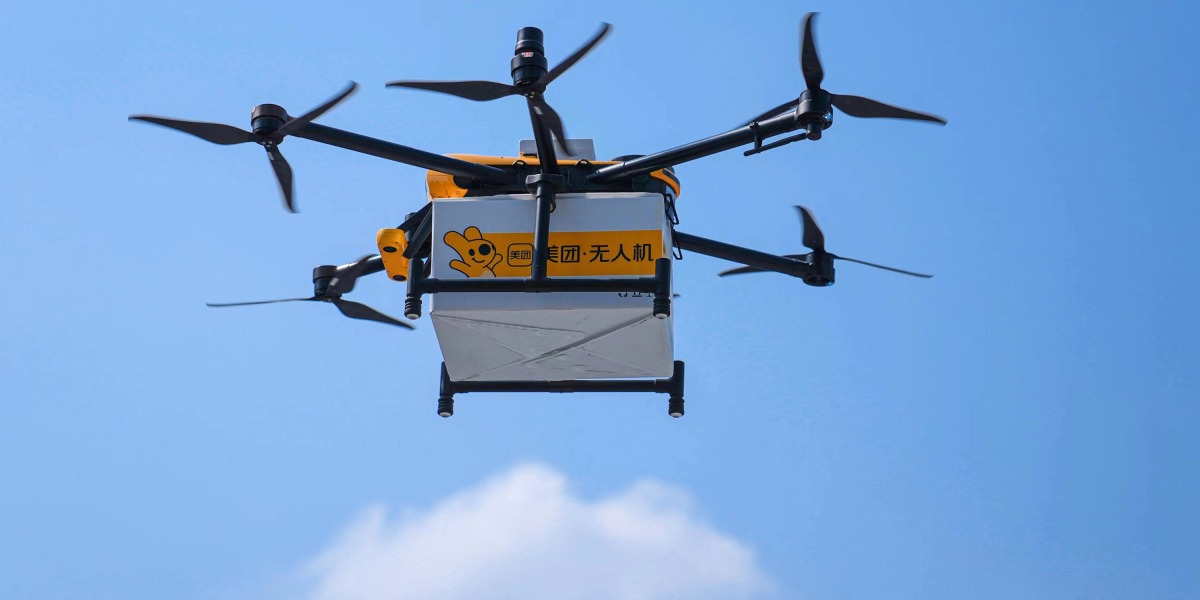Food delivery by drone is just part of daily life in Shenzhen

The workflow is a mix of human and automated labor. Once the drone delivery system gets an order (customers order specific items marked for drone delivery in the company’s app), a runner (human) goes to the restaurants, all located a few flights down in the shopping mall, to pick up the order and brings it to the launchpad. The runner places the food and drinks in a standardized cardboard box, weighs it to make sure it’s not too heavy, seals the box, and hands it off to a different worker who specializes in dealing with the drones. The second worker places the box under a drone and waits for it to lock in.
Everything after that is highly automated, says Mao Yinian, the director of drone delivery services at Meituan. The drones’ movements are controlled by a central algorithm, and the routes are predetermined. “You can know in advance, at every precise second, where each drone will be and how fast its speed is, so the customers can expect the arrival time with a deviation of two seconds, instead of three minutes or even 10 minutes (when it comes to traditional delivery),” he tells MIT Technology Review.
The company has a centralized control room in Shenzhen, where staff can take control of a drone in an emergency. There are now more than a hundred drones that can be deployed for deliveries in the city. On average, one operator is watching 10 drones at the same time.
Not all human labor can or should be replaced by machines, Mao says. But the company has plans to automate even more of the delivery process. For example, Mao would like to see robots take over the work of loading packages onto drones and changing their batteries: “Our ground crew may have to bend over a hundred times a day to load the package and change the batteries. Human bodies are not designed for such movements.”
“Our vision is to turn the [launchpad] into a fully automated factory assembly line,” he says. “The only work for humans is to place the nonstandardized food and drinks into a standardized packaging box, and then there’s no more work for humans.”
Regulatory and economic constraints
Today, there are few technical obstacles left for drones delivery of food and packages, says Jonathan Roberts, a professor of robotics at Queensland University of Technology in Australia, who has researched drones since 1999. “We definitely can do reliable drone delivery, but whether it makes financial sense is a little bit hard to know,” he says.
Regulation often determines where companies choose to set up shop. In 2002, Australia was the first country in the world to introduce legislation on unmanned aerial vehicles, as drones are technically called. The law allowed universities and companies to conduct drone experiments as long as they obtained official licenses. “So [Australia] was the perfect place then to do testing,” says Roberts. That’s why Alphabet’s Wing tested and launched its drone deliveries in Australia before trying them in any other country.
It was a similar story for Meituan and the city of Shenzhen, where the municipal government has a strong drone manufacturing supply chain and has been particularly friendly toward the industry. On a national policy level, the central government has also permitted Shenzhen, one of the country’s designated Special Economic Zones, to have more flexibility when it comes to commercial drone legislation.




